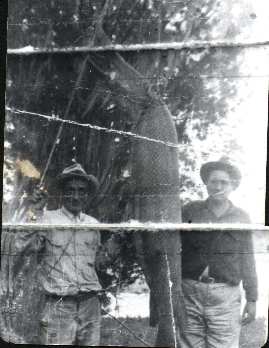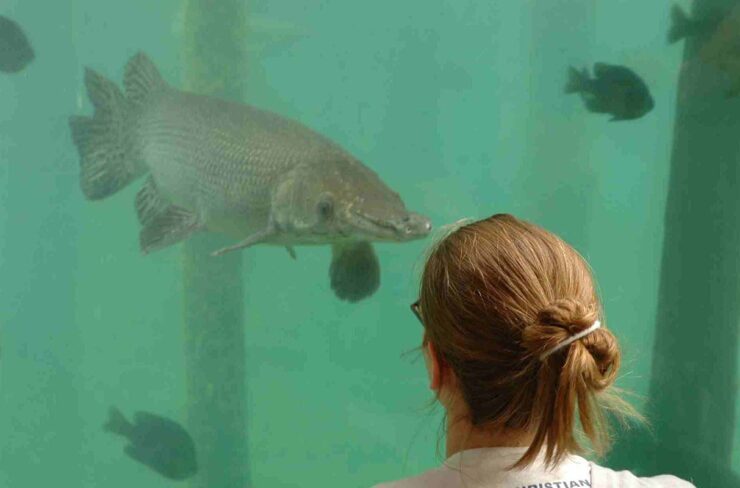Picture of a huge alligator gar caught in the wilds of Louisiana many years ago photos! Alligator gar reach weights of 300 pounds. Dont know the weight of this one but easy to say it would make the record book. Alligator gar are caught this size fairly regularly but most of the time it is not on rod and reel so they aren’t eligible to be submitted for inclusion in the state record books.
You might be suprised to find out there is one documented case of a person being bitten by a huge gar. It was obviously a case of mistaken identity. Years ago someone had their foot hanging of a pier, splashing in the water of Lake Pontchartrain. A huge alligator gar bit the persons foot.
If you have an interesting fish picture send it to me and I will place it on my website! Sending it as a jpg will make it smaller than sending it as a bmp (bitmap). If you send it as a bmp or someother format I can convert it to jpg format for you.
Alligator gar fish get their name from the fact that when they get huge their skin will remind you of an alligator.
These gar fish are most often caught on trot lines. So submit your jpg of Louisiana caught fish are any place for that matter, Louisiana or not. Don’t forget to check out the other photos and pictures here at “The Jump”!


